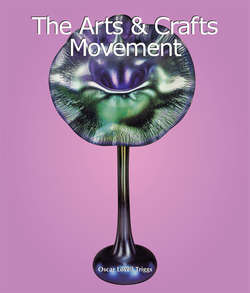The Arts & Crafts Movement

Реклама. ООО «ЛитРес», ИНН: 7719571260.
Оглавление
Oscar Lovell Triggs. The Arts & Crafts Movement
1 – Ruskin’s Contribution To The Doctrine Of Work
2 – Morris And His Plea For An Industrial Commonwealth
3 – Ashbee And The Reconstructed Workshop
4 – The Development Of Industrial Consciousness
Major Artists
John Ruskin (London, 1819 – Coniston, 1900)
Philip Speakman Webb (Oxford, 1831 – Worth, 1915)
William Morris (Walthamstow, 1834 – Kelmscott, 1896)
William Frend De Morgan (London, 1839–1917)
Walter Crane (Liverpool, 1845 – Horsham, 1915)
Charles Robert Ashbee (London, 1863 – Sevenoaks, Kent, 1942)
Bibliography
Отрывок из книги
First row (from left to right):
Richard Norman Shaw (architect),
.....
The ground is now cleared for understanding Ruskin’s teachings respecting industry. He had proclaimed that art must spring from the people, that its test was its lowliness and its universality. He now reversed the proposition, and announced the necessity of ennobling the people through association with art – an association to be attained by means of their labour. The separation that had occurred between the artist and the artisan had worked injury to both kinds of products. The artists had become effeminate because they were not used to handling rough materials; workmen had become debased because they could not exercise their faculties in designing. The problem was to universalise art and to ennoble labour. Whether labour was dignified or not depended upon its character; whether rough and exhausting or with elements of recreation; whether done under conditions of slavery or freedom. Some work is degrading by its physical conditions; other work is dangerous to health; still other work destroys moral character. Labour can be dignified only as it has the character of dignity. In The Seven Lamps it is written that “objects are noble or ignoble in proportion to the amount of the energy of that mind which has visibly been employed upon them.” But fullness of life involves a large degree of freedom.
The sight of a degraded workman caused Ruskin the deepest gloom, while that of a free workman aroused his highest enthusiasm.
.....